FOR EKIBEN ENTHUSIASTS, TRAVELLING IN JAPAN COMBINES TWO OF THE MOST PLEASURABLE THINGS TO DO: TRAIN TRAVEL AND EATING.
They call ekiben 駅弁 the fast food of high-speed Japan, and for good reason. Where else can you to tuck into an artfully composed bento box while riding a bullet train travelling at more than 320 km an hour?
Ekiben, short for eki bento (or station lunchbox), is unique Japanese fare sold at long-distance train stations. Every Shinkansen (bullet train) platform has at least one store or push cart selling ekiben.
You’ll also find these delicious snack boxes in some of the major department stores, and on food trollies on board many long-distance trains.
It’s the ingenious answer to eating well on the go in a country where everyone really is in a hurry.
These lunch boxes – often fitted with nori rolls, breaded pork fillets, chicken teriyaki, grilled mackerel or vegetable tempura – were once considered a simple and convenient necessity for time-poor travellers.
Now, ekiben are all the rage with tourists and locals alike. Boxed bento lunches typically sell for between 400 yen and 700 yen (A$4.50 – $8) for a small offering and around 3,000 yen (A$34) for a more elaborate boxed meal that might be shared between two people.
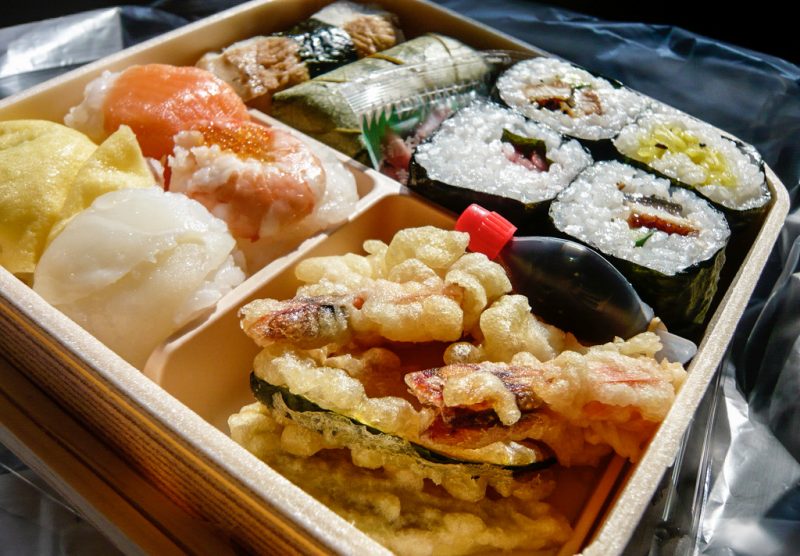
Ekiben are sold at more than 500 railway stations throughout Japan with as many as 3,000 varieties said to be available, showcasing local ingredients and offering a unique taste of different regions.
I’ve heard that at some regional stops – like Yokokawa north-west of Tokyo, which has one of the most famous ekiben in the country – the train virtually empties.
Passengers rush the vendors to buy the Toge-no-Kamameshi, a type of Japanese pilaf cooked with various types of meat, seafood, and vegetables in a pot. It’s even been given a Royal Warrant of Appointment.

You can buy a version of this famous ekiben at Daimaru, as well as in the Keisei department store at Ueno Station. It’s one of the few pottery-packaged ekiben still available.
In Tokyo, you’ll find the largest selection of ekiben at kiosks and stores near the boarding areas at long distance train stations like Shinjuku, Tokyo and Ueno stations. You won’t find ekiben at stations with only regional commuter lines or subway/metro lines, like Ginza.

The thing you will find most striking about ekiben is the presentation, inside and out.
A good ekiben appeals to the eye as well as the appetite, so a great deal of thought goes into how the contents of each box are presented.
The fish, meat, vegetables and rice are arranged with colour combinations in mind.
Travel memories and food are closely intertwined.
That’s why many ekiben are sold in decorative pottery vessels (pictured above) or thin wooden boxes, often wrapped with decorative paper and tied with a string. It’s all part of the tradition of creating a lasting memento of a journey.
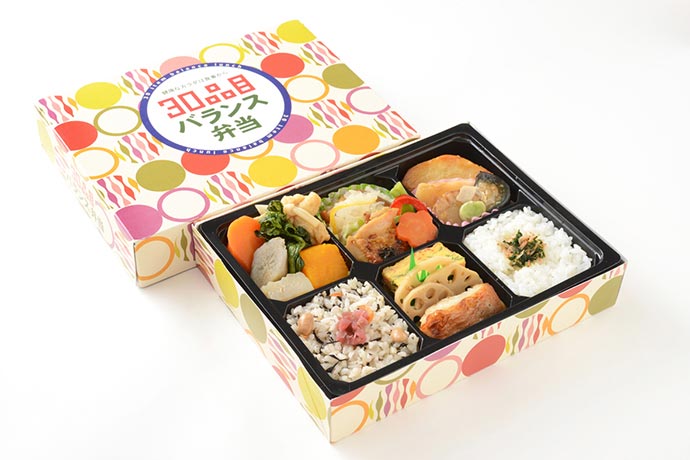
Because travel memories and food are closely intertwined, ekiben boxes were originally intended to remind you of the meal it once held, as well as the sights you saw or the people you met while travelling by train.
There is always a little pair of chopsticks tucked inside most ekiben, along with miniature bottles of soy sauce or packets of fresh or pickled ginger.
However, because they’re designed for easy carrying, these lunch boxes rarely include soup.
But I did notice you can buy a wine ekiben if you’re travelling on the Shinkansen from Kobe, in western Japan. It includes a small bottle of wine to accompany your wagyū beef, saffron rice and potatoes.
And if rice and raw fish isn’t your thing, you can buy an ekiben that is little more than a sandwich.
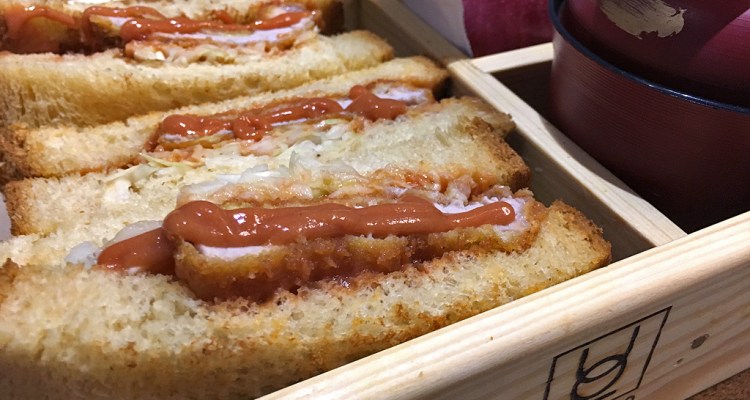
The pork tonkatsu is crumbed pork with finely shredded cabbage and spicy sauce on crustless white bread that is sometimes toasted.
The ‘katsu sando’, as it is often called, is a staple of Japan’s lunchtime bento box. You can even get a chicken katsu or just a plain ham sandwich if that is more to your liking.
Here are some of the other memorable types of ekiben you can buy in Japan:
Shinkansen E7 Kei Bento
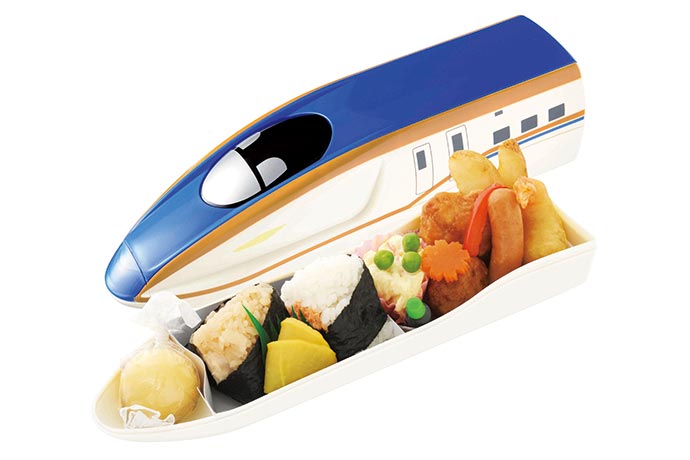
If you’re near Tokyo Station, drop in to Ekiben-ya Matsuri and pick up an ekiben lunch box in the form of a bullet train, or Shinkansen.
This special moment lunch box includes classic items such as seafood onigiri (rice balls), pickled daikon radish, shrimp fritters, fried chicken and cake. Once you’re done, you can keep the cool bullet train to take home.
Ekiben-ya Matsuri is the most popular place to buy a boxed lunch at Tokyo Station, it’s actually the place to go. You have to go through the ticket gates to access the store, but it sells more than 170 types of ekiben and bento.
Self-Heating Ekiben or Kanetsu-shiki
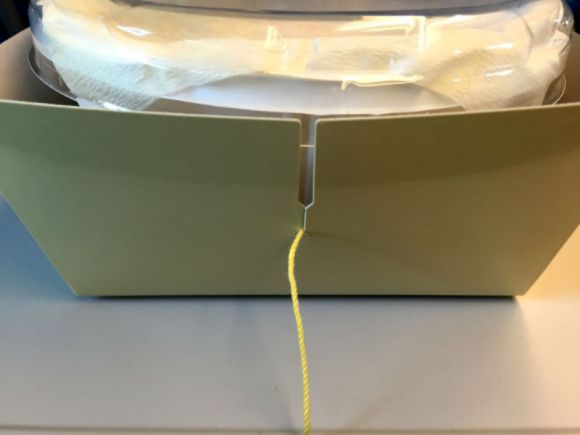
You don’t have to compromise taste for convenience when buying ekiben, particularly those with beef, pork or chicken. While many people choose to eat these dishes cold, they now come in a specially designed self-heating bowl.
When you pull the string it creates some sort of chemical reaction on the underside of box which warms the food. You can hear a slight puff and sometimes see some steam.
I’ve never seen anything like it, but after five or six minutes the food is hot and ready to eat.
If you are travelling through Tokyo’s Haneda or Narita airports you might also notice these tasty carry-on snack boxes. Because they are sold at airports rather than stations, they are known as soraben 空弁 (sora: sky) (ben: bento).

Soraben seem to be aimed more at domestic travellers, specifically business travellers, taking short flights. Japan Airlines (JAL) even serves soraben as a meal option.
© 2019 Bernard O’Riordan (Travel Instinct). All Rights Reserved
You Might Have Seen Our Work In These Publications





[…] YOU MIGHT ALSO LIKE TO READ OUR BLOG TOKYO: BULLET TRAIN BENTO […]
LikeLike
[…] the capital will be heaving, the good news is you could always jump on the Shinkansen bullet train and experience more serene parts of the […]
LikeLike